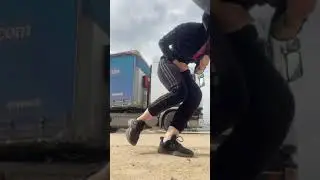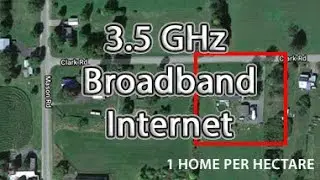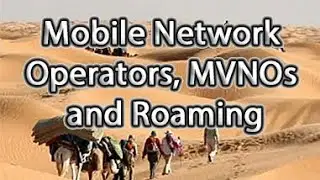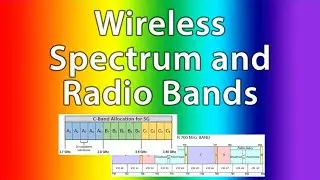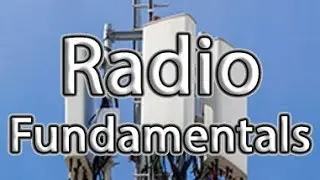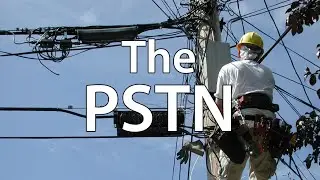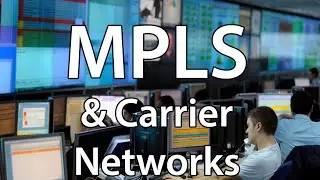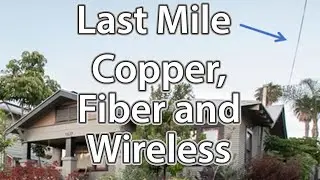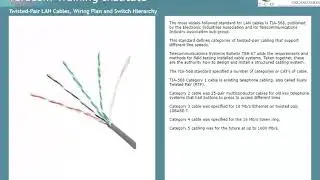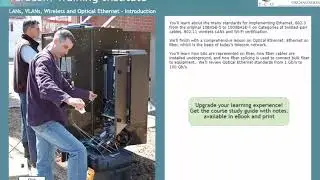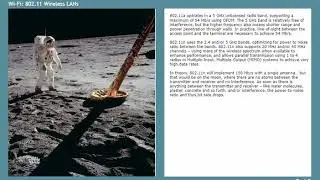Tutorial: How Protocol Stacks and Layers Work
Explains the OSI layers and how protocol stacks work using an analogy of business-to-business communications by FedEx.
An excerpt from TCO Certified Telecommunications Network Specialist (CTNS) Course 2212 The OSI Layers and Protocol Stacks: Protocols & Standards • OSI Model • Layers • Protocol Stacks • FedEx Analogy
https://www.teracomtraining.com/onlin...
This course begins the "networking courses" in the Certified Telecommunications Network Specialist (CTNS) certification package.
https://www.teracomtraining.com/onlin...
The OSI 7-Layer Reference Model is used to sort out the many functions that need to be performed, to be able to discuss separate issues separately. The functions are organized into groups called layers, which are stacked one on top of the other. This allows us to relate different pieces of the puzzle in subsequent lessons.
The course starts with the big picture, then one lesson for each layer, then protocol stacks.
Course Lessons
1. Introduction
2. Open Systems
3. Protocols and Standards
4. ISO OSI 7-Layer Reference Model
5. The Physical Layer
6. Data Link Layer
7. Network Layer
8. Transport Layer
9. Session Layer
10. Presentation Layer
11. Application Layer
12. Protocol Stacks
13. Protocol Headers
14. Standards Organizations
Based on Teracom's famous Course 101, tuned and refined over the course of more than 25 years of instructor-led training. You'll learn what a layer is, what the layers are, what each one does and examples of where things like TCP fit into the model ...and how it all works together… in plain English.
What You Will Learn
This course establishes a framework for all of the discussions in subsequent lessons and courses: the OSI 7-Layer Reference Model, which identifies and divides the functions to be performed into groups called layers.
You'll learn what a layer is, the purpose of each layer, see examples of protocols used to implement each layer, and learn how a protocol stack really works with the famous "FedEx Analogy" presented as an embedded video by our top instructor, Eric Coll.
On completion of this course, you will be able to explain:
The concept of an open system and its advantages
What a protocol is, and what a standard is
The OSI Model and its purpose
What a Layer is
The seven layers of the OSI model
The name of each layer
The functions each layer is responsible for
Examples of actual protocols for each layer
What a protocol stack is and how it operates
Examples of standards organizations that publish protocols
Detailed Course Outline
1. Introduction Course introduction and overview
2. Open Systems Open systems vs. proprietary systems.
3. Protocols and Standards Illustrated overview of all the functions required for communications, and protocols vs. standards
4. ISO OSI 7-Layer Reference Model Top-level overview and introduction to Layers
5. The Physical Layer Fiber, Twisted Pair, Cable and Wireless
6. Data Link Layer LANs and MAC Addresses
7. Network Layer IP, MPLS, Packets and Routers
8. Transport Layer Reliability, Connections, Ports and Sockets
9. Session Layer SIP, POP and HTTP
10. Presentation Layer ASCII, MIME, Compression, Encryption, Codecs
11. Application Layer SMTP, HTML and English
12. Protocol Stacks How a protocol stack and peer protocols actually work. Tracing the flow through the stack with the FedEx Analogy (source for this tutorial)
13. Protocol Headers Babushka Dolls
14. Standards Organizations ISO, IETF, ITU
Download the Course Brochure PDF for the full detailed description:
https://www.teracomtraining.com/pdfs/...
Build structured, broad knowledge of networks - understanding that lasts a lifetime. Stand out from the crowd!







